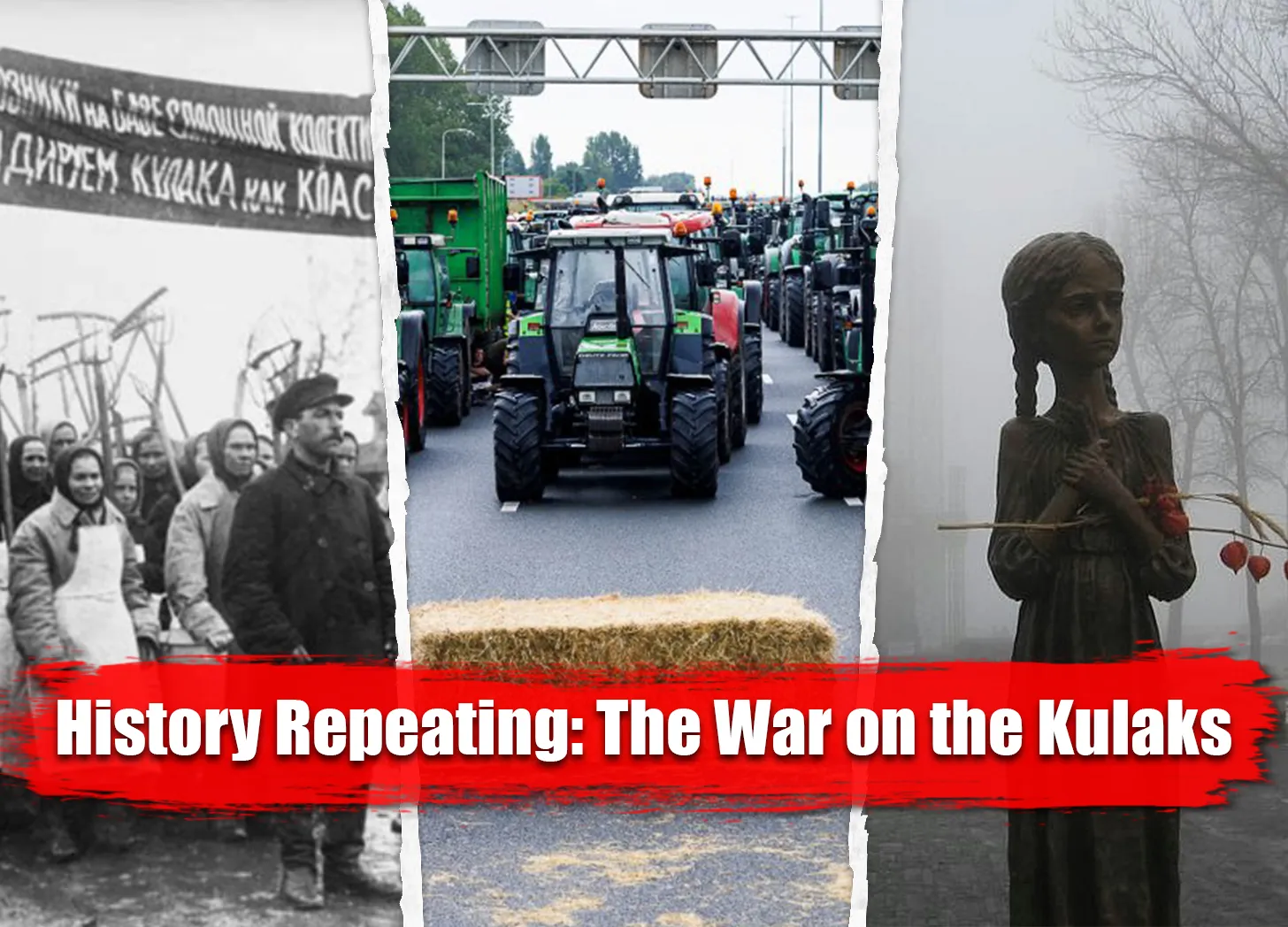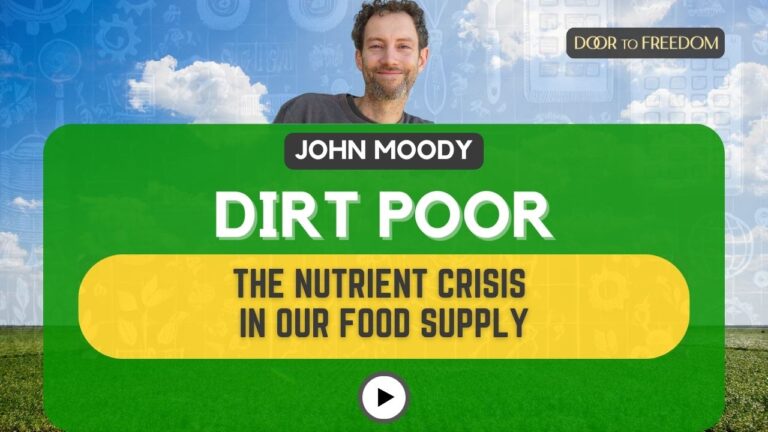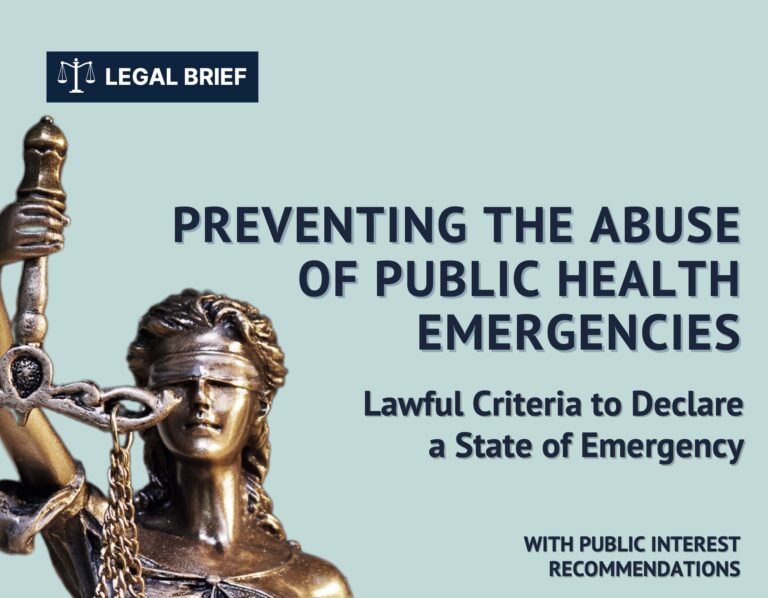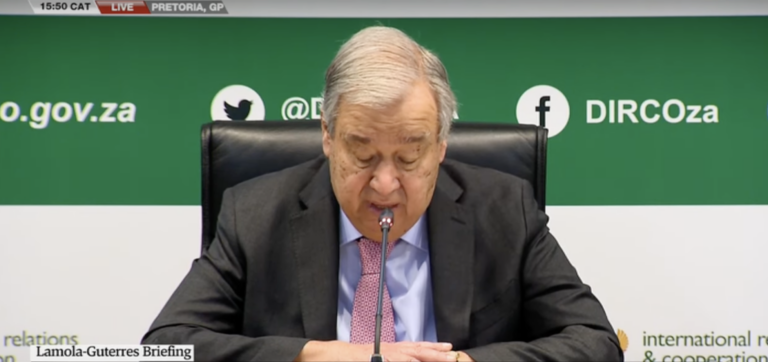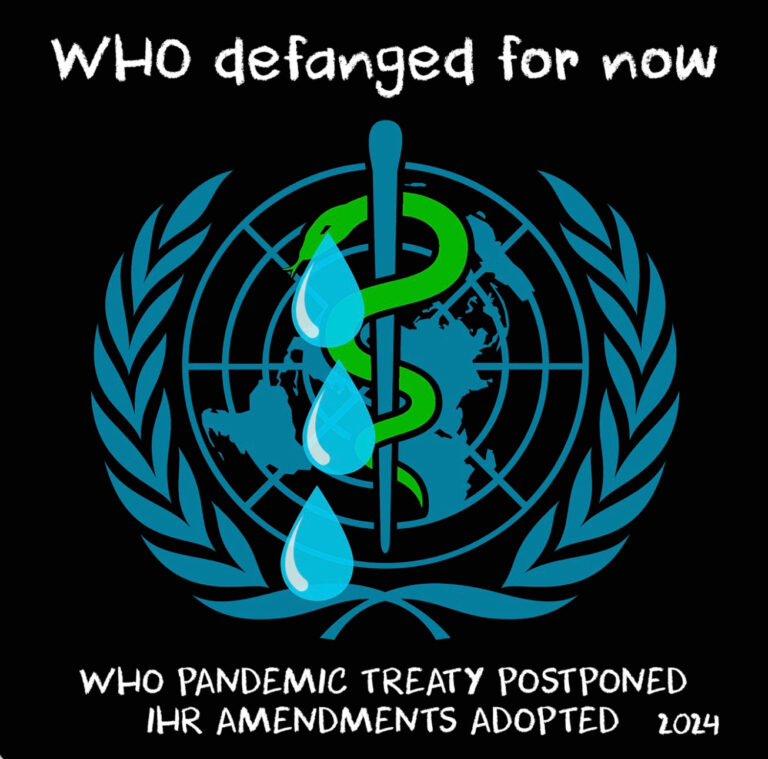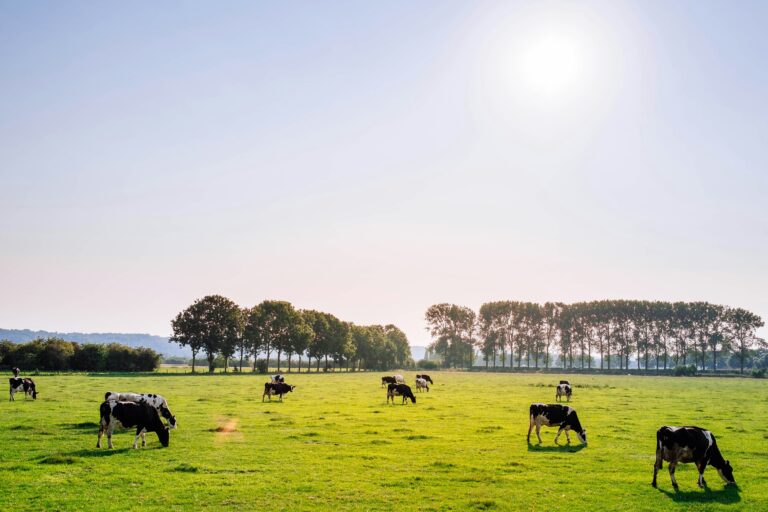If you’ve read We’re All Dutch Farmers Now and We’re All Sri Lankan Farmers Now, then you’ll know all about the concerted war on farming that is taking place right now, not just in Holland or Sri Lanka but in Ireland and Argentina and Canada and Spain and seemingly every other country around the globe. And, if you have read those editorials, then you’ll also know all about the Malthusian Absolute Zero Sustainable Enslavement Great Food Reset agenda that is behind this push to villify farmers and to stigmatize the very act of farming itself.
But do you remember when recently ousted Dutch farm minister Henk Staghouwer declared that “we must smash the farmers, eliminate them as a class!”?
And do you recall when Canadian prime minister Justin Castreau asserted, “To launch an offensive against the farmers means that we must prepare for it and then strike at the farmers, strike so hard as to prevent them from rising to their feet again”?
And do you remember what beleaguered Sri Lankan president Gotabaya Rajapaksa was heard to remark (shortly before fleeing the country)? “In order to oust the farmers as a class, the resistance of this class must be smashed in open battle and it must be deprived of the productive sources of its existence and development.”
Of course you don’t, because they didn’t say those things. Joseph Stalin did. And he wasn’t talking about farmers. He was talking about kulaks.
That’s right, if this 2020s war on farming sounds familiar, that’s because it’s another example of history repeating. A hundred years ago, Joseph Stalin was plotting how to destroy the kulaks and confiscate their land and property for the glory of the Soviet empire. Today, Gates and Schwab are plotting how to destroy small farmers and take over their land and resources for the glory of the 2030 Agenda.
Think I’m joking? Let’s take a look . . .
WHO WERE THE KULAKS?
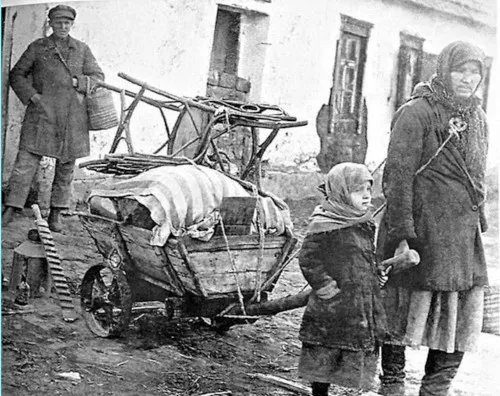
The deportation of a kulak family from Ukraine.
So who were the kulaks, exactly?
Excellent question. As it turns out, there are (as usual) two answers to that question: the glib answer you’ll find in the history textbooks and the real one.
The glib answer—as provided by the Wikipedias and Britannicas and the other online bastions of truthiness to which people turn these days—is that the kulaks were prosperous, land-owning peasants who were targeted by the Bolsheviks in the early Soviet Union. As The Telegraph informs us in its explainer article on the subject: “Kulak in Russian means ‘fist,’ as in ‘you tight-fisted, miserly bastard,’ and it was originally simply a derogatory term for a dishonest person who grew wealthy trading grain.”
Then the chroniclers of officially sanctioned, textbook-worthy history will tell us about the “dekulakization” campaign that arose in the 1920s, branding these “wealthy” peasants as a class enemy of the Soviet revolution.
This dekulakization campaign began (by Stalin’s own admission) as a policy of “restricting the kulaks’ exploiting tendencies”—i.e., imposing punishing taxation, burdensome fines and increasing restrictions on the practice of renting land or hiring labourers. But (again, by Stalin’s own admission) as soon as the Soviet government calculated that it had the economic and political power to kick the kulaks off their land and collectivize their farms, the policy of “restricting the kulaks” became something altogether darker:
We could not permit dekulakization as long as we were pursuing the policy of restricting the exploiting tendencies of the kulaks, as long as we were unable to go over to a determined offensive against the kulaks, as long as we were unable to replace the kulak output by the output of the collective farms and state farms. At that time the policy of not permitting dekulakization was necessary and correct. But now? Now things are different. Now we are able to carry on a determined offensive against the kulaks, break their resistance, eliminate them as a class and replace their output by the output of the collective farms and state farms. Now, dekulakization is being carried out by the masses of poor and middle peasants themselves, who are putting complete collectivization into practice. Now, dekulakization in the areas of complete collectivization is no longer just an administrative measure. Now, it is an integral part of the formation and development of the collective farms. Consequently it is now ridiculous and foolish to discourse at length on dekulakization. When the head is off, one does not mourn for the hair.
In a word, the policy of “restricting” the kulaks quickly became that of eliminating the kulaks. And, with that genocidal policy in place, the Soviets got to work confiscating land, uprooting families, tearing apart communities, dispossessing millions, redistributing vast swaths of farmland, and, eventually, starving millions of peasants in the name of their glorious communist revolution.

“Let Us Destroy the Kulaks as a Class!” Soviet anti-Kulak propaganda ca. 1930
As I say, this much is openly discussed in the mainstream textbooks and history books, if for no other reason than because the narrative of the evil Russkies starving millions of Ukrainians in the Holodomor (as real and tragic as that story is) plays conveniently into current propaganda narratives.
But to say this much about the campaign to “eliminate the kulaks” is to say nothing at all. In order to truly understand the horrors of dekulakization, we need to turn to a first-hand source, one that treats the subject at greater length and includes the context necessary to understand the term “kulak” as it came to be used. You’ll forgive me, then, from quoting at length from Aleksandr Solzhenitsyn’s The Gulag Archipelago Vol. 1:
In Russian a kulak is a miserly, dishonest rural trader who grows rich not by his own labor but through someone else’s, through usury and operating as a middleman. In every locality even before the Revolution such kulaks could be numbered on one’s fingers. And the Revolution totally destroyed their basis of activity. Subsequently, after 1917, by a transfer of meaning, the name kulak began to be applied (in official and propaganda literature, whence it moved into general usage) to all those who in any way hired workers, even if it was only when they were temporarily short of working hands in their own families.
[. . .]
But the inflation of this scathing term kulak proceeded relentlessly, and by 1930 all strong peasants in general were being so called—all peasants strong in management, strong in work, or even strong merely in convictions. The term kulak was used to smash the strength of the peasantry. Let us remember, let us open our eyes: only a dozen years had passed since the great Decree on the Land—that very decree without which the peasants would have refused to follow the Bolsheviks and without which the October Revolution would have failed. The land was allocated in accordance with the number of “mouths” per family, equally. It had been only nine years since the men of the peasantry had returned from the Red Army and rushed onto the land they had wrested for themselves. Then suddenly there were kulaks and there were poor peasants. How could that be? Sometimes it was the result of differences in initial stock and equipment; sometimes it may have resulted from luck in the mixture of the family. But wasn’t it most often a matter of hard work and persistence? And now these peasants, whose breadgrain had fed Russia in 1928, were hastily uprooted by local good-for-nothings and city people sent in from outside. Like raging beasts, abandoning every concept of “humanity,” abandoning all humane principles which had evolved through the millennia, they began to round up the very best farmers and their families, and to drive them, stripped of their possessions, naked, into the northern wastes, into the tundra and the taiga.
Solzhenitsyn helps us understand what the term “kulak” really meant. It wasn’t meant as some neutral description of a wealthy, rich, exploitative, capitalist, land-owning farmer standing in the way of socialist utopia, as Soviet propaganda had it. Rather, it was a weapon, a label that could be slapped on anyone who served as an impediment to government policies. That weapon could then be used to dehumanize, dispossess, imprison and even kill peasants who opposed the Soviet push toward collectivization of the farms.
As a history lesson, the story of dekulakization is tragic and harrowing. But what does it have to do with the events we see unfolding today?
WHO ARE THE NEO-KULAKS?

OK, we know all about the Soviets and their war against the kulaks. But that’s ancient history. Do you hear any politicians talking about eliminating the kulaks today?
Of course not! There’s no longer a war against the kulaks. That would be silly.
No, here in the the Enlightened, Progressive, Democratic, Sustainable 21st century, there’s no war against the kulaks. But there is a war against those dirty, polluting farmers! And guess what? It amounts to almost the same thing.
Evidence of this war abounds. And, as noted above, in my previous articles on We’re All Dutch Farmers Now and We’re All Sri Lankan Farmers Now, I detailed the many, many ways that governments are now engaged in open battle with their own farmers, attempting to limit, restrict, reduce and even eliminate farmers in the name of the 2030 Sustainable Development Goals.
As further testament to this ongoing state of warfare between farmers and their own governments, witness the incredible lengths to which governments are willing to go in order to reduce the number of farmers working the land.
In the US, for example, the Biden administration has vowed to greatly expand the Conservation Reserve Program, a USDA scheme to pay farmers not to farm (in the name of reducing pollution, of course). In November 2021, Agriculture Secretary Tom Vilsack (yes, that Tom Vilsack) announced the government’s intention to add four million acres of farmland to the program, meaning that the US government would shell out a further $300 million a year to prevent farmers from farming.
The Dutch war on farmers, meanwhile, includes not only the same types of mandates and restrictions that are being implemented by governments across the planet, but also includes an increasingly ominous series of threats, ultimatums and financial punishments. Last November, the country’s nitrogen minister (because, yes, “nitrogen minister” is now a thing that exists) threatened uncooperative farmers with forced buyouts if they do not voluntarily sell their farmland to the government. And, last December, the Dutch agriculture minister tabled a proposal for banks to cut loans to farmers by 10%. In a brilliant example of political doublespeak, the minister framed the proposal not as a crippling impediment to farmers who rely on credit to finance their inherently cyclical and risk-prone farming practices, but as an opportunity to engage in cost-cutting that “will give farmers more financial room to either stop or switch to greener farming practices.”
Even more remarkably, the UK launched a program in 2022 that offers to buy out farmers who leave the agricultural industry altogether. Announced in a press release on the gov.uk website, the program sounds like a Godfather-esque “offer you can’t refuse” couched in the chillingly inhuman rhetoric of official globalese.
“Farmers who wish to leave the industry will be supported by a new Government scheme which provides a lump sum payment, allowing them to exit the sector in a managed way,” reads the announcement, adding: “In return for their payment, farmers will surrender their entitlements and be expected to either rent or sell their land or surrender their tenancy.”
In yet another textbook example of doublespeak, the UK’s inherently anti-farming program is touted as a way of increasing agricultural production by “creat[ing] opportunities for new entrants and farmers wishing to expand their businesses.”
The trick here, as in the days of dekulakization, is that this narrative hinges on the idea that there are two competing classes of farmers. There are the Virtuous, Sustainable, Green farmers—i.e., those farmers who are willing to adopt whatever technologies and practices the bureaucratic overlords deem necessary to meet the ever-changing emissions targets—and there are the bad, old-school farmers who want to persist with their outdated, pollution-heavy farming methods.
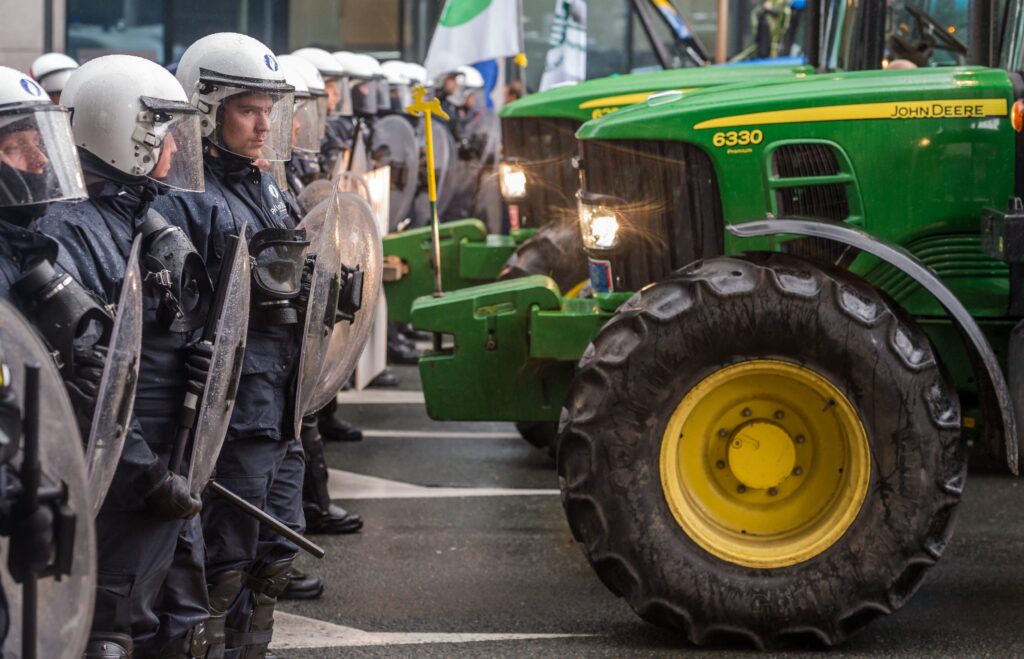
Regular readers of The Corbett Report who are familiar with the history of the Rockefeller-funded, Big Agra swindle that was the so-called “Green” revolution will be completely unsurprised to learn that the Virtuous, Sustainable, Green farmers in this neo-kulak narrative are the farmers who show their fealty to the UN’s 2030 Sustainable Development Goals by buying Big Ag technology and agreeing to curtail their production of meat and other demonized food products in favour of cricket powder and other “sustainable” food alternatives.
A perfect example of this narrative is presented in “Mexico’s wheat fields help feed the world. They’re also releasing a dangerous greenhouse gas,” a lengthy propaganda piece published by The Washington Post in 2021 that tells us about the scourge of nitrogen fertilizer use by Mexican farmers. The article informs us that the only solution to this problem is for these farmers to adopt new and expensive Big Ag technologies:
Instead of subsidies or regulation, León Zaragoza said that federal funding supports CIMMYT and other organizations so they can try to convince farmers to adopt the sensors, drones and other technology for more efficient nitrogen use. “There is excessive use of nitrogen fertilizers in wheat production in the Yaqui Valley,” León Zaragoza said. These farmers “should apply less nitrogen fertilizer and that is why we have supported institutions such as CIMMYT for the development of diagnostic tools.”
So, let me get this straight. Big Ag agents don’t want the government to support farmers with subsidies so that they can produce more food during a time of growing concern over the global food supply chain. No, these Big Ag shills want the government to instead give that subsidy money to mysteriously acronymed organizations so they can “try to convince farmers” to adopt expensive Big Ag technologies? And this is being touted as a solution to our environmental problems in the pages of the CIA’s favourite newspaper?
Blatant propaganda like that is bad enough, but it gets worse. Who is this “CIMMYT” referenced by Zaragoza? None other than the International Maize and Wheat Improvement Center. While that will mean precisely nothing to the average WaPo reader, those of you who have followed my deep dives on the biotech business will know that CIMMYT is the Rockefeller Foundation-founded research center that hosted Norman Borlaug, the man touted as the godfather of the aforementioned “Green Revolution” and credited with “saving a billion lives.”
And you will also know that the PR surrounding Norman Borlaug and the so-called “green” revolution is a lie. As I have already demonstrated, the green revolution was nothing more than a scheme to subsidize the spread of Big Ag technologies around the world. Indeed, rather than helping poor, indigenous, subsistence farmers, that “revolution” instead drove those poor farmers off the land in favour of rich landowners who were willing to play ball with the Big Ag seed oligopolies and other conglomerates.
So, in other words, the very same players who helped fleece the world in the name of the green revolution are up to their same tricks in this latest farming “revolution.”
Of course, it scarcely needs to be said, but let me say it anyway: the war against the neo-kulaks has as much to do with “saving the earth” as Stalin’s war against the original kulaks had to do with “protecting the Soviet revolution.” No, Stalin wasn’t worried about prosperous peasants corrupting his rural comrades; he was simply seeking to consolidate Soviet control over the agricultural sector so that he could implement his first Five-year Plan for the Soviet economy.
Similarly, this drive to “reduce nitrogen emissions” and to “reimagine farming for the 21st century”—with all the Eat Ze Bugs brainwashing and carbon rationing that it implies—has nothing whatsoever to do with saving the planet. And, although it certainly will line the pockets of Big Ag and their billionaire benefactors, it isn’t even fundamentally about money. It’s about control.
Those who’ve looked behind the propaganda and platitudes being spouted by the UN technocrats and their fellow travelers have recognized that the “sustainable development” agenda has always been about control. But the monopolization of the world’s resources will never be completed until the globalists can eliminate any opposition to their sustainable enslavement agenda.
And that is what the war on the neo-kulaks is really about.
WHERE DO WE GO FROM HERE?
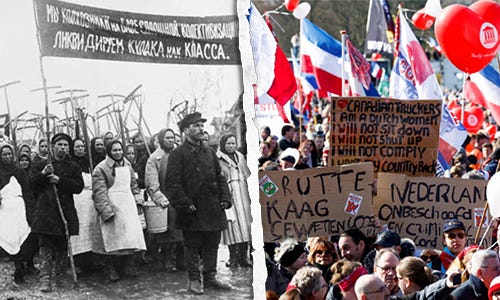
Here in 2023, the historical parallels between Stalin’s war against the kulaks and the globalists’ war against the neo-kulaks are clearer than ever. A century ago, Stalin used dekulakization as an excuse to collectivize the farmland, and today the globalists are waging war against the neo-kulaks in an attempt to “collectivize” (i.e., oligopolize) the farmland.
We already know what this push to demonize farming means for the future of our food supply. The World Economic Forum-endorsed push to Eat Ze Bugs and the Rockefeller-supported push to replace organic foods with genetically modified substitutes and the Bill Gates-backed push to replace real food with lab-produced biogunk are just the most obvious parts of this agenda.
So, will the would-be controllers get their way? As usual, that depends on us. Will we swallow their swill, which demonizes the neo-kulaks as evil, dirty, polluting, racist, misogynists? Will we follow the party line and fret about how the production of food by small-hold farmers is a threat to our planet?
Sadly, there is every indication that many have already fallen under the sway of the propagandists. Observe the recent footage of earnest young protesters saying without irony that “farming needs to stop” because it is the “single biggest driver of climate change.”
To be sure, this war against farmers is in its early stages. To use Stalin’s language, we are still at the “restricting the kulaks” stage of this process. We have not yet reached the “eliminating the kulaks as a class” stage of the unfolding drama. But is there any doubt that such a campaign is coming?
For those who have difficulty imagining where the world might be heading, I leave the last words today to Solzhenitsyn, where he explains the waves of dissidents who were rounded up and slaughtered in the revolutionary fervour of the Soviet takeover.
And so the waves foamed and rolled. But over them all, in 1929–1930, billowed and gushed the multimillion wave of dispossessed kulaks. [. . .] There was nothing to be compared with it in all Russian history. It was the forced resettlement of a whole people, an ethnic catastrophe. But yet so cleverly were the channels of the GPU-Gulag organized that the cities would have noticed nothing had they not been stricken by a strange three-year famine—a famine that came about without drought and without war.
This wave was also distinct from all those which preceded it because no one fussed about with taking the head of the family first and then working out what to do with the rest of the family. On the contrary, in this wave they burned out whole nests, whole families, from the start; and they watched jealously to be sure that none of the children—fourteen, ten, even six years old—got away: to the last scrapings, all had to go down the same road, to the same common destruction.

